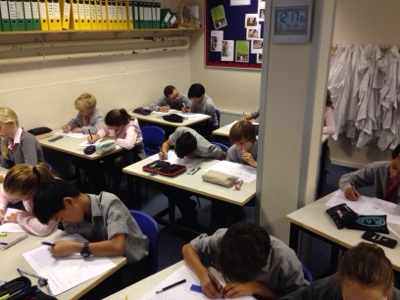Friday, 7 October 2016
Friday, 16 September 2016
Maggots
6M have been studying the requirements for life. Part of this work involves investigating sensitivity.
And the maggots were put back carefully.
Year 8 spring to action
Year 8 are testing sting toys in their energy studies this week.
Then the spring toys were primed and their jump filmed using the slopro app.
This meant the height it reached could be recorded accurately.
Thursday, 15 September 2016
Not all spring toys are equal!
8S measured the energy in spring toys today.
Analysis of results tomorrow.
6M meet Captain Beaky?
In their work on adaptations 6M got all beaky today. They used different types of tongs as beaks and tried to pick up different foods
The "food" consisted marbles, string, rice, pin pong balls, water, rubber bands and all sorts of other things.
They used all sorts of techniques not just pinching and squeezing.
This helps show why birds have different beaks.
Some were better at picking up certain foods.
But were rubbish for picking up other foods.
The pupils had 30 seconds at each feeding station.
Then they changed places and could opt to use a different beak.
They learned that different shaped beaks are better for different types of food.
And had a lot of fun.
IRP
Some had small pointy beaks
And others had big long beaksThe "food" consisted marbles, string, rice, pin pong balls, water, rubber bands and all sorts of other things.
They used all sorts of techniques not just pinching and squeezing.
This helps show why birds have different beaks.
Some were better at picking up certain foods.
But were rubbish for picking up other foods.
The pupils had 30 seconds at each feeding station.
Then they changed places and could opt to use a different beak.
They learned that different shaped beaks are better for different types of food.
And had a lot of fun.
IRP
Subscribe to:
Comments (Atom)























































